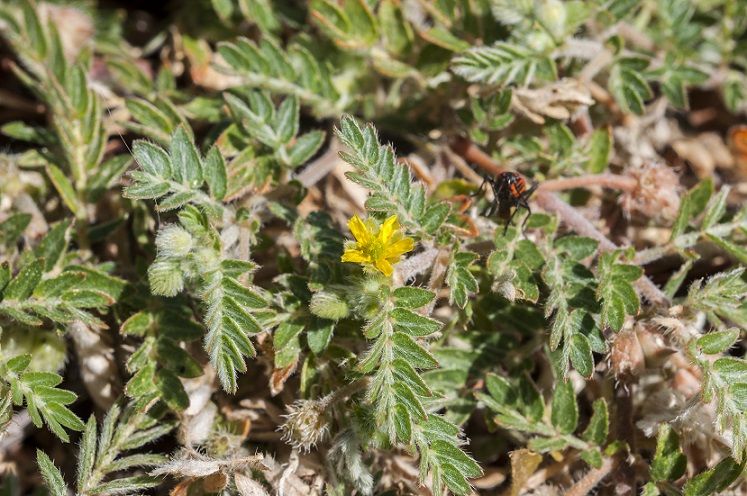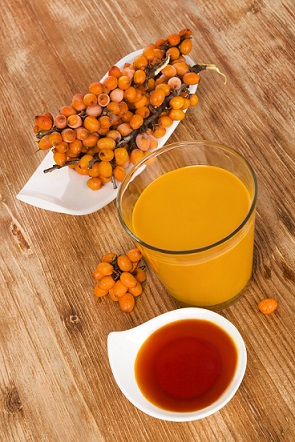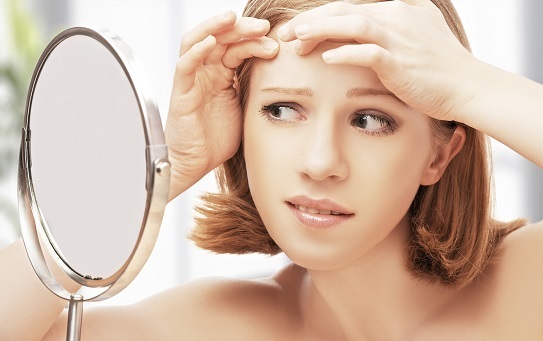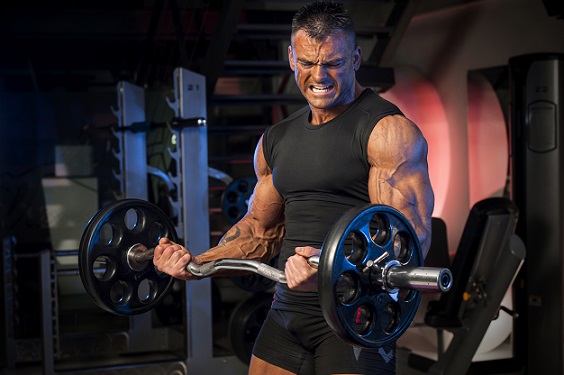 Tribulus terrestris (puncture vine) is an herb which grows worldwide, but particularly heavily by roadsides and on pasture lands in India, which is perhaps the most popular testosterone booster in the world.
Tribulus terrestris (puncture vine) is an herb which grows worldwide, but particularly heavily by roadsides and on pasture lands in India, which is perhaps the most popular testosterone booster in the world.
It ascended to massive fame in the 1990s and is said to increase strength, mood, focus, muscle-building, and energy. What’s more, Ayurvedic Indian medicine proscribed it for increasing sperm count and the chances of conceiving.
Like any testosterone booster, some gym users love tribulus terrestris and proclaim it to be a secret weapon (even though it’s hardly a secret anymore). Others denounce it as being useless, a scam, and having a laughably small effect on muscle mass.
But one effect which bodybuilders have consistently reported is acne. In fact, the acne is often severe enough to make some give up and switch to another famous gym supplement like tongkat ali or deer antler spray.
Is there any truth to these claims? Absolutely, because you only need a loose grasp of acne science to know that increasing testosterone can cause it.
Does tribulus terrestris even increase testosterone?
DHT and testosterone are the main androgen hormones in humans. They’re responsible for muscle building, aggression and sex drive in both men and women, but also acne, as they stimulate your sebaceous glands to pump out more oil.
Therefore, our first mission is to establish the precise nature of tribulus terrestris’ hormonal effects.
Firstly, we have this study where several animals were injected with tribulus terrestris itself. This study helped to spark the original hype, as serum testosterone rose by 52% and 25-51% in primates and rats respectively. DHT levels increased by 30-32% in rabbits and 31% in primates.
However, the study was on animals, and used massive injections of tribulus terrestris directly into the bloodstream. The huge increases only lasted briefly, but that said, the positive results were repeated on many animals, including rabbits and rats.
Read Annihilate Your Acne – get the ultimate diet and clear your acne permanently!
Next, we have some positive human studies. This one fed tribulus terrestris to both men and women daily for eight weeks. The formulation consisted of 10% protodioscin, a steroidal saponin which is the main active compound in the tribuls terrestris herb. Concentrations of protodioscin are often displayed on supplement bottles, and in our study, both men and women enjoyed a big increase in luteinising hormone (LH). That’s one of the main precursors to testosterone.
This study meanwhile, observed no difference in serum testosterone in humans fed tribulus terrestris compared to those fed a placebo. However, free testosterone went up by 32%, the unbound form of testosterone which binds to bodily androgen receptors and actually exerts its effects, including those in the skin.
Two promising studies then, or unpromising depending on your goals, but other human studies have revealed no increase. This one examined 21 healthy young men, and found zero significant effect on either testosterone or luteinising hormone.
In this study, scientists tested a placebo against a combination of tribulus terrestris and other herbs (saw palmetto, indole-3-carbinol, chrysin), and detected no change in levels of the “big T”.
A 2007 study added yet more confusion, as the expected physical benefits failed to appear. Rugby players took either a placebo or a tribulus terrestris supplement, causing both groups to gain fat free mass and overall mass after five weeks of training, but with no difference between the groups.
Recommended – the top 6 vitamins and minerals for acne-free skin
However, this big review noted that the active compound protodioscin increases sex drive by “increasing the conversion of testosterone into the potent dihydrotestosterone”, AKA DHT.
Overall, we have a murky picture. However, the isolated compound protodioscin is a well-established testosterone booster, and the herb contains several other steroidal saponins (essentially natural plant steroids), including desgalactotigonin, F-gitonin, desglucolanatigonin, gitonin and tigogenin.
What’s more, many tribulus terrestris products on the market contain almost no protodioscin, the most active hormonal compound. Hence, those brands would be useless, and this could explain the mystery of the wildly varying testimonials.
Tribulus terrestris is nowhere near proven to increase DHT or testosterone (in humans anyway), but there’s a good chance that well prepared forms do.
The implications for acne
It’s a common dilemma faced by bodybuilders, powerlifters and amateur athletes from all walks of life. How do you enhance performance without getting a faceful of acne? There are many questions on bodybuilding forums relating to this.
Luckily, testosterone boosters vary wildly in the pathways they achieve their magic through. We’ve discussed the role of DHT and testosterone countless times on this website, but in short, testosterone isn’t as bad for acne; it’s more focussed on muscle mass. DHT is a strong androgen, which stimulates oily skin more powerfully, but also stimulates muscle mass and facial hair. All aspiring men of high vitality and health need some DHT, but an imbalance will tilt you towards oily skin.
As for tribulus terrestris, the luteinising hormone theory would be the best for acne. Luteinising hormone is the precursor to testosterone formation; higher levels will increase both testosterone and DHT by a similar proportion, since DHT is formed from testosterone.
The top 7 topical treatments for clearing acne naturally
However, if the theory that protodioscin enhances the conversion of testosterone to DHT is accurate, the acne danger increases. This adds yet another layer of uncertainty.
Overall, there’s a strong chance that the hormonal powers of tribulus terrestris will give you acne. It’s happened to many gym users, it could happen to you too.
Tribulus terrestris has benefits for acne as well
But good news – tribulus terrestris is a complex plant with many possible effects on acne. A flood of evidence has shown great reductions in chronic inflammation, the number one cause of acne.
If true, then the dangers of androgens would be partially counteracted. Ayurvedic medicine seems to agree, as they classify the tribulus terrestris herb as sheeta, which means cooling. They recommend it for killing bacteria, preventing cancer, and calming the immune system. Here’s what the evidence says:
ONE – this 2015 study tested a specific compound found in tribulus terrestris called N‑trans‑ρ‑caffeoyl tyramine (CT). It suppressed a master gene called COX-2, which controls a variety of inflammatory responses. It also reduced the inflammatory chemicals IL-6 and TNF-a, and in a dose dependant manner; these chemicals are particularly concentrated in acne-prone skin.
TWO – this study tested an extract of the whole plant. Like the isolated CT compound, tribulus terrestris inhibited TNF-a and suppressed the COX-2 gene.
The scientists concluded that tribulus terrestris “inhibits expression of mediators related to inflammation and expression of inflammatory cytokines”, which could benefit “various inflammatory diseases”. Last time we checked, acne vulgaris was an inflammatory disease.
THREE – this study also tested a whole plant extract, and managed to calm an inflamed rat paw substantially. The more tribulus terrestris applied, the more inflammation fell – the results were dose dependent.
There’s plenty of new evidence for anti-inflammatory properties.
The only minor barrier is that the studies were on isolated cells, rather than oral supplements. But if the powers translate, then the benefits would be less red, painful, and “angry” looking pimples (ignoring hormones for a second).
Your average gym rat is probably oblivious to these powers, but they’d benefit gym performance as well, by reducing stiff and aching muscles after a workout.
Then there’s a second power which few know of – increasing antioxidants:
ONE – three groups of rats were fed oxalates to induce oxidative stress, with one group also taking tribulus terrestris (2011 study). Oxalates are plant crystals found in vegetables such as kale and spinach, which are safe in moderate amounts but highly inflammatory in higher doses.
After 7 weeks, the tribulus terrestris group had the smallest increase in oxidative stress. Antioxidant enzyme activity was protected, and inflammation fell significantly as well.
TWO – this study was interesting, as it concluded that some of the fertility benefits from tribulus terrestris may be down to its antioxidants. A variety of different tribulus terrestris products were tested, and all were rich in antioxidants, particularly polyphenols and flavonoids.
This says all you need to know: “the obtained results demonstrated that T. terrestris preparations possess a significant antioxidant activity”.
THREE – tribulus terrestris was able to prevent apoptosis caused by oxidative stress in this 2012 study, the process of programmed cell death. Radiation was used to generate reactive oxygen species (free radicals) and tribulus terrestris was able to scavenge them.
Vitamin E – the ultimate nutrient for clogged pores
The scientists concluded that tribulus terrestris could protect cells from “lethal oxidative damage”, and that its respected place in Ayurvedic medicine may be down to its antioxidant profile. Sounds promising.
The tribulus terrestris plant may improve the two worst conditions behind acne – chronic inflammation and oxidative stress.
This ]wouldn’t eliminate the acne risk completely, as some men and women have sebaceous glands which are particularly well stimulated by DHT and testosterone. That’s one of the main genetic aspects of acne.
However, it means that tribulus terrestris is far safer than the statement “increases free testosterone by 32%” suggests. In fact, this plant may even be worth experimenting with. I would call it an interesting plant for clear skin even if we didn’t need to explain the fears that gym rats have.
How to have high testosterone and clear skin
 These hidden powers also mean that you can enjoy the benefits of increased testosterone without the downsides. Your muscles can become huge, your energy can go through the roof, and your voice could deepen, all without a fresh outbreaks of pimples.
These hidden powers also mean that you can enjoy the benefits of increased testosterone without the downsides. Your muscles can become huge, your energy can go through the roof, and your voice could deepen, all without a fresh outbreaks of pimples.
Of course, tribulus terrestris isn’t proven to work, but the point is that if you choose it, you won’t be making a decisive choice between muscle and clear skin.
I don’t advise male acne patients to lower androgens at all – they’re too important for feeling alive. The oily skin dangers are easy to counteract from inside the body. We’ve discussed that repeatedly elsewhere (see here), so we won’t get into it again now, but some strategies you can deploy are lowering insulin, eating antioxidants and increasing vitamin A.
That said, there’s one androgen shield which we’ve only touched upon lightly – natural topical treatments.
One of the best topical treatments for oily skin is sea buckthorn oil. The oil of the sea buckthorn berry fruit is extremely high in vitamin A, and when you apply it to your skin, it soaks through to the sebaceous glands and downregulates them.
Have you ever been prescribed topical retinoids? They’re simply a form of synthetic vitamin A, designed to control oily skin. Sea buckthorn oil does the same thing naturally.
What’s more, it contains two compounds called beta-sitosterol and stigmasterol which act similarly. This study found that sea buckthorn oil reduced oily skin by 17% after one week, 18% after two weeks, and 45% after eight weeks.
Green tea, meanwhile, also reduces oily skin but through directly counteracting the androgen receptors of sebaceous glands instead of with vitamin A.
This is down to the antioxidant epigallocatechin gallate (ECGC). ECGC is proven to lower DHT when drunk, and is recommended to hair loss patients far and wide, but it’s much smarter to stick it directly on your face.
Are there any studies? Yes, this one found 60% reductions in oily skin after eight weeks. This study found that green tea lowered acne by 51.3% in eight weeks. Green tea is one of the best natural topical treatments around.
Topical oily skin remedies are one of the best ways to make bodybuilding and other intense sports harmless for acne.
That said, stay away from internal androgen blockers like saw palmetto, although these are great for acne if you’re a woman, as females are far more likely to have excess DHT.
The verdict
Tribulus terrestris isn’t proven to increase testosterone and DHT, but it probably does. Nevertheless, a faceful of acne isn’t guaranteed, even if your gym performance goes through the roof and you pack on so much muscle that you can’t fit through a door frame.
There’s enough antioxidants and anti-inflammatory properties within this Indian herb to soften the dangers. In fact, these properties make tribulus terrestris a promising herb to experiment with fullstop (although not a top priority). If you add some secret topical treatments to the mix like sea buckthorn oil, you can stomp on the dangers further.
Keep an eye out for acne, but don’t let the rumours and whispers knock you off your fitness mission.
NEXT: get the complete strategy for clearing acne naturally
Thanks for reading!

